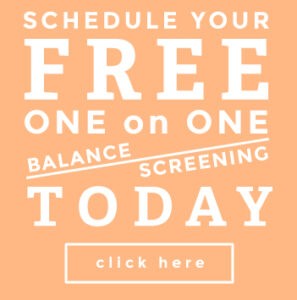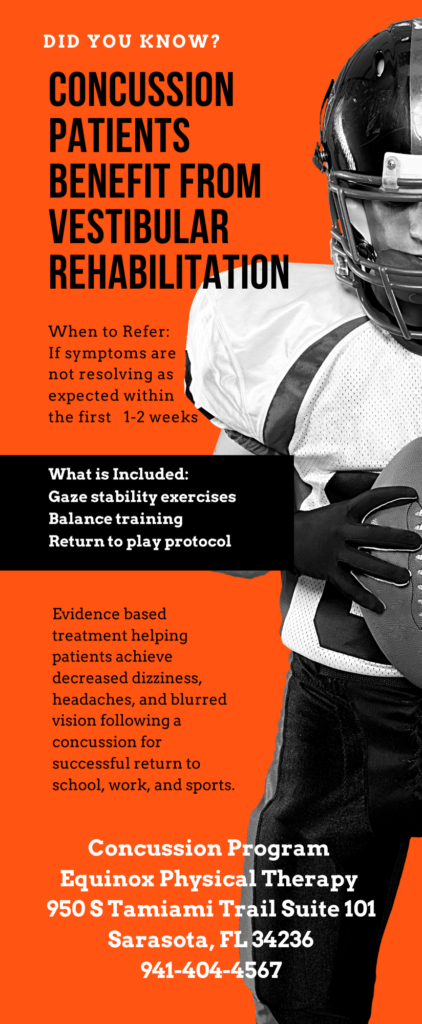The Vestibular Ocular Reflex (VOR) is the mechanism that allows a person to keep their eyes on a fixed target while their head is moving, for instance when you are looking at your friend and nodding your head “yes” or “no”. The reason we are able to do this is because our inner ear system acts like little gyroscopes that tells our brain when our head is in motion. Your brain then takes that information, and tells the eye muscles what to do to keep your eyes on the target.
The VOR exercise is especially important when a person has had damage to their inner ear system. The brain, which was used to getting normal inner ear information previously, will have to relearn how to use the information that has lessened due to illness or injury.
I’ll give you a common example. Let’s say that a person has an inner ear infection that affects their Left inner ear system, and decreases responsiveness of the Left vestibular system (the balance part of the ear) to send information during head motions. When the person now moves their head, the left ear is sending less information than the healthy right ear. This difference in input to the brain being sent from the two ears can result in symptoms of dizziness, nausea, or unsteadiness. Ironically, some patients will avoid moving their heads so that they don’t get dizzy, but movement is the only way for the brain to learn how to use the inner ear information again!
Vestibular Ocular Reflex exercises help the brain through this retraining process, because the exercise forces the brain to receive inner ear information and practice using it to keep the eyes on a fixed target. Patients start with slow head turns, keeping the eyes on a fixed target placed on the wall at eye level 4 feet away. They start in a seated position and move the head 20 degrees to each side in a back and forth head motion. They also do the exercise in an up and down head motion as if nodding “yes”. As they are able to do the exercise symptom-free, we increase the duration of the exercise to 2 minutes.
The next step is to gradually increase the speed of the head motion. If you are doing the exercise correctly, your symptoms will decrease over the next few weeks. If you aren’t doing the exercise correctly, you may think the exercises don’t work! This is why working with a vestibular specialist is so important. If you are not improving, they can figure out what you are doing wrong and help you learn how to perform the exercise correctly, and hence, recover as much inner ear function as your body will allow.
Levanna Doing Exercise, painting by Maria Primachenko




